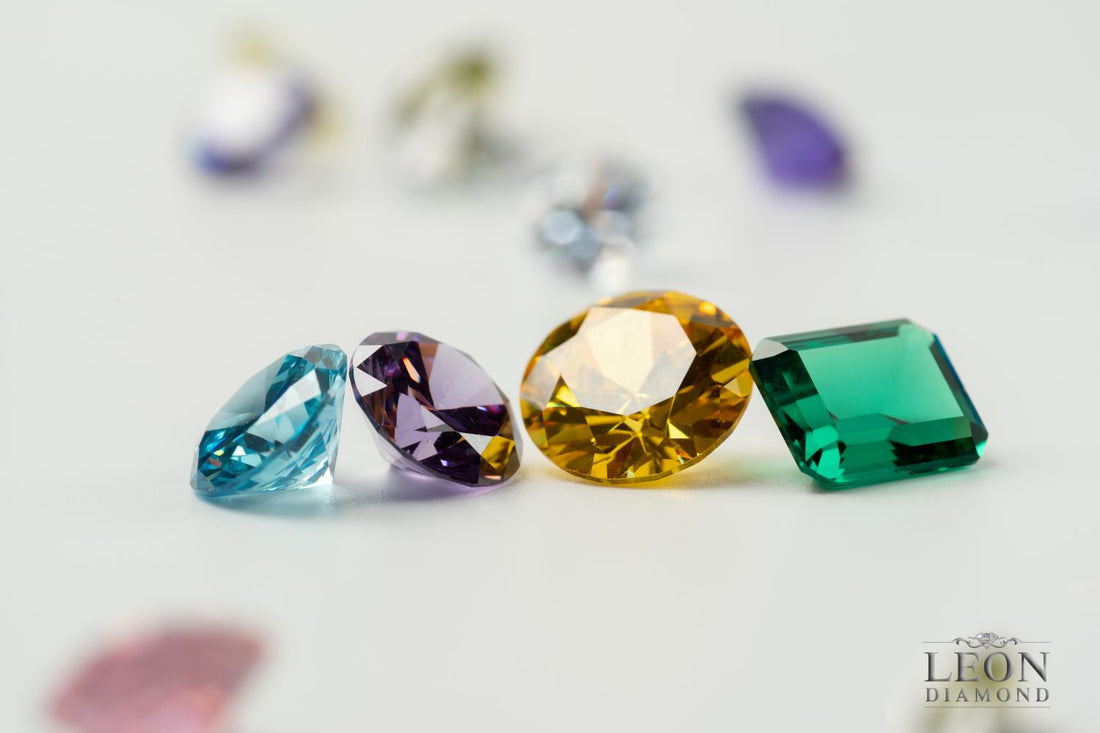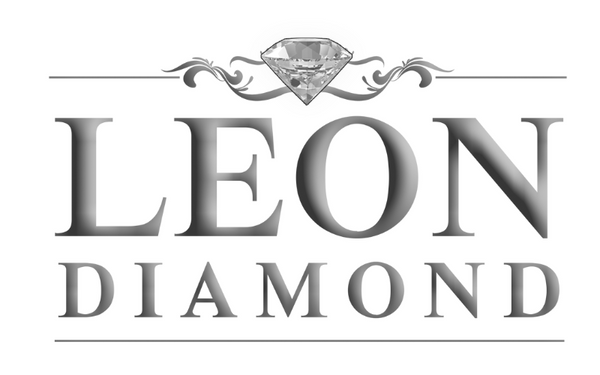
How to Incorporate Colored Gemstones into Engagement Rings
Share
Choosing an engagement ring is a big decision. For many, diamonds are no longer the only option. Colored gemstones bring new meaning and beauty to this tradition. They add depth, personality, and symbolism to every design.
From sapphires to emeralds and their weights of production, these vibrant stones offer endless creativity. They allow couples to break away from trends and follow their hearts. If you're searching for a one-of-a-kind engagement ring, colored gemstones are worth exploring.
This guide explains how to incorporate colored gemstones into your ring. We’ll cover styles, stones, settings, and care tips. Let’s make your forever ring both personal and unforgettable.
The Appeal of Colored Gemstones: Why They’re a Stunning Choice

Colored gemstones are more than just pretty stones. They are emotional, expressive, and unique. People choose them to reflect personal style or deeper meanings.
Some couples pick stones based on birth months or anniversaries. Others are drawn to a color that holds a special memory. Either way, color creates emotional value in a way diamonds sometimes can’t.
Celebrities like Kate Middleton and Penélope Cruz have chosen vibrant gems. Their choices prove that color is elegant, timeless, and chic.
Benefits of Colored Gemstones:
- Show personality and tell your love story.
- Stand out from traditional diamond rings.
- Budget-friendly compared to high-end diamonds.
- Ethical options like lab-grown or fair-trade stones.
Color also allows more creativity in design. From pastel pinks to deep greens, there’s a shade for everyone.
Popular Colored Gemstones for Engagement Rings
Not every gemstone is created equal. Some are more suited for daily wear. Others need extra care but offer unmatched beauty.
When selecting your gem, consider durability, symbolism, and style. Below are the most loved colored stones used in engagement rings today.
1. Sapphire
Sapphires are timeless and ultra-durable. Though blue is most common, they come in many shades. Pink, yellow, green, and even white sapphires are available.
They symbolize wisdom, loyalty, and truth. This makes them a strong choice for engagement rings. They’re also ranked 9 on the Mohs scale, just under diamonds.
2. Emerald
Emeralds feature a rich, vibrant green. They are known for their elegance and vintage feel. Their Mohs hardness is 7.5–8, so they need careful handling. Symbolically, they represent growth, love, and harmony. Their natural inclusions, called “jardin,” add to their character.
3. Ruby
Rubies are bold, red, and full of passion. They’re also among the hardest gems, scoring a 9 on the Mohs scale. Rubies represent love, strength, and courage. Their dramatic color looks stunning with white or yellow gold. They’re ideal for those who want a statement piece.
4. Morganite
Morganite’s blush pink tone is soft and romantic. It’s a favorite for feminine, delicate designs. With a Mohs rating of 7.5, it’s best worn with care. Morganite represents compassion, promise, and emotional healing. It looks beautiful in rose gold settings.
5. Aquamarine
Aquamarine is serene and sophisticated. Its pale blue hue resembles the calm sea. It scores 7.5–8 in hardness, making it a practical choice. This gem symbolizes peace, clarity, and protection. It’s perfect for minimal, elegant designs.
6. Amethyst
Amethysts are rich purple stones full of character. They rank 7 on the Mohs scale, so they’re a bit softer. Known for promoting clarity and balance, they’re also affordable. Amethysts work well in both modern and vintage styles.
Factors to Consider Before Choosing a Gemstone

Colored gemstones are stunning, but beauty isn’t everything. You also need to think practically. Not every stone is built for daily wear.
Before you commit, ask yourself the following:
1. Durability and Hardness
- Choose stones that won’t chip or crack easily.
- Look for a Mohs hardness of 7.5 or higher.
- Softer stones need protective settings.
2. Color Quality
- Look for even color and strong saturation.
- Avoid stones that are too dark or too light.
- Make sure the hue matches your skin tone.
3. Clarity and Cut
- Colored gems often have inclusions.
- Choose cuts that highlight the stone’s best features.
- Brilliant cuts enhance sparkle and light play.
4. Stone Origin and Ethics
- Know where your stone comes from.
- Ask for conflict-free or fair-trade certification.
- Lab-grown gems are eco-friendly and ethical.
5. Maintenance Needs
- Know how to clean and store your gemstone.
- Some stones require special care.
- Always ask your jeweler for long-term care advice.
Choosing wisely ensures your ring will last a lifetime.
Best Settings for Colored Gemstones
The setting can enhance or weaken your stone’s look. It also plays a big role in protection. Match your setting style with the stone’s durability.
1. Halo Setting
This setting surrounds the center gem with small diamonds. It boosts sparkle and adds contrast. It also makes the center stone appear larger. Ideal for smaller gemstones or stones with lighter tones.
2. Bezel Setting
This is one of the most secure settings. The metal rim wraps fully around the stone. It protects the edges from chipping. Best for active lifestyles or softer stones like morganite.
3. Prong Setting
Prongs hold the gemstone in place with minimal metal. This allows more light to enter, making the stone sparkle. Ideal for harder gems like sapphires and rubies.
4. Three-Stone Setting
This style features a main gem with two side stones. The side stones can be diamonds or other colored gems. It represents your past, present, and future together.
5. Vintage or Filigree Setting
These settings are full of old-world charm. They use detailed metalwork and romantic motifs. Perfect for emeralds and classic lovers.
Mixing Gemstones with Diamonds
You don’t have to choose between color and sparkle. Mixing colored gemstones with diamonds creates stunning results. It balances tradition with personality.
Popular Mixing Ideas:
- Diamond halo around a sapphire or ruby.
- Pavé band with a colorful center gem.
- Diamond side stones flanking a morganite or emerald.
- Dual halos, one with diamonds, one with colored gems.
This combination offers depth, contrast, and elegance. You get the best of both worlds, brilliance and color.
Colored Gemstone Engagement Ring Styles

Your ring should reflect your personality. Whether you love vintage charm or modern chic, there's a design that fits.
1. Classic Solitaire with Color
Replace the diamond with a colored gem. Keep the setting minimal to let the color shine.
2. Vintage-Inspired Rings
Use detailed engravings, milgrain edges, or filigree. Emeralds and rubies suit this style well.
3. Modern Minimalist
Clean lines and bezel settings work here. Soft stones like aquamarine or morganite fit beautifully.
4. Boho or Natural Style
Go for rough cuts, earthy tones, or mixed textures. Perfect for non-traditional couples.
5. Customized Designs
Add meaningful symbols, initials, or secret stones. This makes your ring uniquely yours.
No matter the style, color adds something special.
Symbolism Behind Popular Gemstones
Many couples choose stones based on their spiritual meaning. Here's a breakdown of what each popular gem stands for:
|
Gemstone |
Symbolic Meaning |
|
Sapphire |
Loyalty, truth, wisdom |
|
Emerald |
Harmony, growth, new beginnings |
|
Ruby |
Passion, power, love |
|
Amethyst |
Calm, clarity, protection |
|
Aquamarine |
Peace, truth, communication |
|
Morganite |
Promise, romance, compassion |
This emotional connection adds depth to your ring choice.
How to Customize Your Ring
Customizing a gemstone ring is a fun, personal process. Here’s how to get started:
- Work with a skilled jeweler for professional guidance.
- Bring inspiration like photos, sketches, or mood boards.
- Select your stone and setting based on lifestyle needs.
- Think long-term; will the design stay timeless?
- Get a wax model or 3D rendering before final approval.
Customization lets you tell your unique love story through jewelry.
Caring for Colored Gemstone Rings
To keep your ring beautiful, you must care for it properly. Every gem has unique needs, but some tips apply to all.
General Maintenance Tips:
- Remove rings during exercise, chores, or swimming.
- Avoid exposing the gem to harsh chemicals.
- Use mild soap and water for cleaning.
- Store separately to prevent scratching.
- Schedule professional cleanings every year.
Some gems like emeralds should never be cleaned with ultrasound. Always ask your jeweler about safe cleaning methods.
Current Trends in Gemstone Rings
Colored gemstone rings are more popular than ever. Designers are pushing creative limits while staying elegant.
Trending Styles Include:
- Mixed metal bands (like yellow gold with platinum).
- East-West settings (stone set horizontally).
- Geometric cuts (like hexagon or kite shapes).
- Two-stone rings (a blend of gem and diamond).
- Custom engraving inside or under the stone.
These trends help you craft a ring that feels modern and meaningful.
Where to Buy Colored Gemstone Engagement Rings

Where you buy matters. Quality, ethics, and service vary by seller.
Trusted Buying Options:
- Local jewelers for personalized service and fittings.
- Online retailers with certifications and return policies.
- Ethical brands offering conflict-free and lab-grown gems.
- Estate jewelers for rare vintage finds.
Always ask for certifications, warranties, and care instructions.
Frequently Asked Questions
What are the most popular ways to add colored gemstones to an engagement ring?
Colored gemstones can be used as the primary center stone for maximum impact or as accent stones alongside diamonds for a more subtle touch of color. Popular approaches include a single striking gemstone, colored side stones, halo settings, or creative designs like ombre or toi et moi rings that pair different gems together.
Which colored gemstones are best suited for engagement rings?
Durability is key for everyday wear. Sapphires and rubies are excellent choices due to their hardness and wide range of colors. Colored diamonds are also highly durable but can be more expensive. Semi-precious stones like tourmaline, amethyst, or alexandrite offer unique looks at lower price points but may require more care and occasional replacement due to their softness.
How do I choose the right color and gemstone for my ring?
Consider your personal style, favorite colors, or meaningful stones like birthstones. Think about the gemstone’s hue, tone, and how it complements your skin tone or wardrobe. Consulting with a jeweler can help narrow down options and ensure the gemstone matches your vision and lifestyle.
Can colored gemstones be combined with diamonds in a ring design?
Yes, combining colored gemstones with diamonds is a popular way to create contrast and highlight both the color and brilliance of the stones. Diamonds can frame a colored center stone, serve as side stones, or be used in a halo or pavé setting to enhance the overall sparkle and uniqueness of the ring.
Are colored gemstone engagement rings more affordable than diamond rings?
Colored gemstones association often offer a broader range of price points compared to diamonds. While some, like sapphires and rubies, can be costly, many colored gemstones are more budget-friendly, allowing for a personalized and distinctive ring without compromising on style or quality.
Let Your Love Shine with Colored Gemstones
Colored gemstones make engagement rings deeply personal. They offer emotion, beauty, and uniqueness. Whether you choose a bold ruby or a soft aquamarine, color tells your unique love story. With expert guidance and care, your ring can last a lifetime. Explore your options, trust your instincts, and select what truly resonates with you.
If you're ready to find a ring that reflects your love in full color, Leon Diamond offers a stunning collection of designs that can help bring your vision to life. Let your love shine brightly and uniquely.
